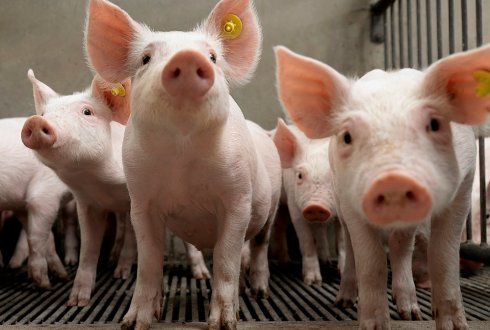Purebred-crossbred correlation shows crossbred information is important to optimize pig breeding programs.
August 11, 2017

In pigs, production animals are generally crossbred animals, while selection takes place in purebred animals, which is why the genetic correlation between purebred and crossbred performance, known as the purebred-crossbred correlation (rpc), is very important.
A recently published review paper by researchers at Wageningen University & Research discusses the theory, estimates and implications of rpc.
The paper shows that rpc likely differs from one for a lot of traits, indicating that crossbred information is very important to optimize breeding programs, the researchers said.
According to the researchers, rpc is the genetic correlation between purebred and crossbred performance. When rpc is 1.0, purebred and crossbred performance are effectively the same trait. When rpc is lower than one, it means that the best purebred animals don’t necessarily produce the best crossbred offspring. Therefore, it is more important to use crossbred information for selecting the best purebred animals when rpc is low.
In this paper, the Wageningen researchers showed that, theoretically, selecting purebred animals based on crossbred performance instead of purebred performance has a large effect on genetic improvement in the purebred animals.
Three different components underlie rpc, namely: (1) genotype-by-genotype interactions, since purebreds and crossbreds have different genetic backgrounds; (2) genotype-by-environment interactions, since purebreds and crossbreds are generally housed in different environments, and (3) differences in trait measurements.
Estimates, implications
In the invited review, published in the Journal of Animal Science, the researchers considered 201 rpc estimates in pigs from 27 studies. The studies estimated the rpc for different purebred-crossbred combinations and a wide range of traits, which were divided into trait categories.
The average rpc estimate was 0.63, which is considerably lower than 1.0, with 50% of the estimates coming in between 0.45 and 0.87. For all different trait categories — e.g., growth, meat amount, meat quality, feed and fertility — the average rpc was around 0.6.
This indicates that rpc is likely different from one and that, for many traits, crossbred information is very important for improving crossbred performance, the researchers said.
Genotype-by-environment interactions appeared to have a smaller contribution to rpc than genotype-by-genotype interactions. More research regarding the effects of the different components on rpc will help improve breeding programs.
Future studies are advised to carefully consider in which environment phenotypes are collected, to estimate separate rpc values for different pure lines and to genotype the animals in order to improve the power to estimate rpc, Wageningen said.
You May Also Like



